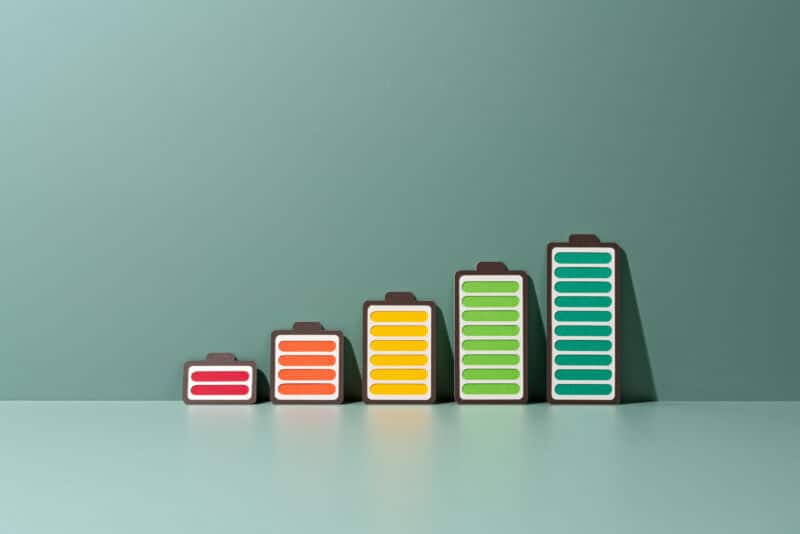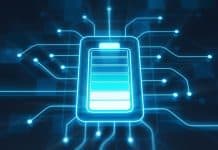
The race is on to generate new technologies to ready the battery industry for the transition toward a future with more renewable energy. In this competitive landscape, it’s hard to say which companies and solutions will come out on top.
Corporations and universities are rushing to develop new manufacturing processes to cut the cost and reduce the environmental impact of building batteries worldwide. They are working to develop new approaches to building both cathodes and anodes—the negatively and positively charged components of batteries—and even using different ions to hold charge. While we can’t look at every technology that’s in development, we can look at a few to give you a sense of the problems people are trying to solve
Cleaner manufacturing
The California-based company Sylvatex has developed a water-free, efficient process for manufacturing cathode active material (CAM). “This process innovation reduces the total cost of CAM by 25 percent, while using 80 percent less energy and eliminating water use and sodium sulfate waste streams,” said Virginia Klausmeier, CEO and founder of Sylvatex.
Sylvatex’s goal is to impact the carbon footprint of the battery-manufacturing process, according to Klausmeier. She argued that other companies have scaled up an inefficient process as the market has grown rapidly. “These plants are utilizing 200 million gallons of water annually. Cathode material makes up like 50–70 percent of the cost of the battery pack.”
According to Alex Kosyakov, co-founder and CEO of the battery-component company Natrion, the usual process for manufacturing lithium-ion cathodes and batteries has many steps. Manufacturers begin by taking ores with low initial concentrations of mined metals such as cobalt, manganese, aluminum, and nickel. They break them down into very small pieces in immense vats containing rotating blades or ceramic balls.
The companies treat the ores with a solution of sulfuric acid that contains large amounts of water. Sulfate salts are extracted after this step. The treatment results in the release of sulfur dioxide into the atmosphere, which causes acid rain and creates workplace safety issues.
Then, the manufacturers mix sulfate salts with lithium salts, combine them, and grind them into powders. They heat the powders in massive furnaces to high temperatures to remove impurities and then heat them again to fuse the lithium with the metal and oxygen.
After this, to make the cathodes, they usually mill the powders again. They then make an ink or slurry by combining the resulting powder with solvents and binders. They paint the resulting liquid onto aluminum foil and let it dry. Next, they cut the coated foil to size, layer it with the other battery materials, press the resulting layers in a rolling press, wind it into a spool or coil, and put it into the battery can.
“What we did was we developed a process that we call our ‘next-gen’ process that is waterless,” Klausmeier said. “It uses a versatility or flexibility of feedstocks without the sulfate molecules so you don’t have any of that waste, so you can use a broader range of inputs that can come from recycled materials… or mined and refined materials that have to be mined and refined less.”
Klausmeier said her company uses hydroxides or metal oxides as feedstocks. The process involves combining these materials with a proprietary additive that she describes as “not quite a surfactant” in a pot that blends it together. This is followed by a calcination step. (Calcination involves raising the temperature of a compound in an environment with limited oxygen but not heating it up so much that it melts.)
Removing the sulfur from the process reduces the manufacturing hazards of creating the CAM.
Developing sodium-ion batteries
After its success supplying lithium-ion batteries to the electric vehicle market, Northvolt has been working secretly on a sodium-ion battery technology and is now ready to talk about it, according to Andreas Haas, senior manager of the company’s sodium-ion program. “After two years, we got to the point where our sodium-ion technology is actually the best-performing in the market, as far as we have seen it. We’re looking at 160 watt-hours per kilogram, which is on par with the incumbent iron-phosphate batteries.”
The sodium-ion batteries are designed for energy-storage applications, Haas said. They have sustainability, safety, and cost benefits. “For stationary energy storage where… we also have a presence, there is an increasing appetite for less-energy-dense but also less-expensive alternatives.” Meaning less expensive than lithium-iron-phosphate (LFP), a variant of lithium-ion batteries.
“What we did in the last years is that we looked at the need for iron-phosphate (LFP) batteries,” Haas said. “Ninety-nine percent of the cathode material for [LFP] batteries [is] made in China, so there is not really a competitive way of localizing it elsewhere. We tried to actually find a technology that is even surpassing [LFP] batteries, and that is where, for us, sodium-ion fits in.”
For the sodium-ion batteries, Northvolt is using Prussian White as a cathode, Haas said. It is an iron-based pigment that was first synthesized by a painter in Berlin in 1704. In 2012, John Goodenough, who won the Nobel Prize in Chemistry for lithium-ion batteries, discovered that it’s a promising cathode material, as its structure can incorporate sodium ions. Since Prussian white is only composed of carbon, nitrogen, and iron, it is relatively affordable. The anode material is hard carbon made out of biowaste, such as shells and wood. The new manufacturing process is resulting in a lower carbon footprint for the product and reduced fire hazards during use.
In contrast to lithium, which is more geographically limited, sodium from brine is available in many parts of the world, Haas said. “On top of that, we’re also avoiding other critical raw materials, which are usually quite expensive and also have quite volatile prices—namely nickel, cobalt, copper, and graphite. So there is not really anything in the cell that is leading to a higher price point.”
Alternate materials
In addition to commercial development, sodium-ion technologies are being studied by the academic world. To pursue sodium-ion research, the University of California, Los Angeles announced that it will open a new center this year—the Center for Strain Optimization for Renewable Energy, or STORE center. This center is replacing a previous one called Synthetic Control Across Length-scales for Advancing Rechargeables (SCALAR). Both centers are funded by the US Department of Energy and have regional academic partners in California.
“This new center is focused on the idea that sodium is significantly bigger. It’s much harder to shuttle it in and out of crystal structures,” said Sarah Tolbert, distinguished professor of chemistry and biochemistry at UCLA. “As a result, sodium-ion batteries are much shorter life span than lithium-ion batteries. What this new center is trying to do is to come up with crystal structures and anodes and cathodes that can put sodium in and out reversibly many times and quickly so that you can get performance more similar to lithium-ion batteries out of the lower-cost sodium system.”
Inserting fluoride ions into lithium-ion batteries as charge carriers was one successful accomplishment of SCALAR, Tolbert said. “You can store twice as much energy.” However, the fluoride is extremely chemically reactive. “I don’t know if fluoride-ion batteries are going to become commercial or not, but there is potential.”
Lithium or sodium can be put into metal alloys, Tolbert said. This results in the whole material becoming ductile and amorphous. It can expand without cracking. Usually, battery components are brittle; when they break, the electrical circuit can be damaged.
SCALAR has also experimented with making lithium-ion batteries charge faster. Tolbert’s team made separator materials that were porous—which she describes as “battery Swiss cheese”—so that liquid electrolyte materials can infiltrate the pores and the lithium ions only have to move a short distance. This results in automotive batteries that charge in under 10 minutes rather than in several hours.
Researchers at SCALAR have been using conductive polymers in batteries as well, Tolbert said. “We found that we could make things cycle much much faster.” This speeds up the charging and discharging process.
Creating hyperthin anodes
Lithium metal anodes for batteries could be much thinner, according to Srini Godavarthy, CEO of Li-Metal Corp. His company is working to create ones that are between two and 20 microns thick. (Typical lithium-ion batteries have lithium in the cathode, not the anode.)
The process of making the lithium metal can also be greatly simplified. It is usually made through a lithium chloride electrolysis process, Godavarthy said. His company is skipping many of the steps and going straight from lithium carbonate to battery-grade lithium metal.
“The traditional processes—they take the carbonate to the chloride, they take the chloride to technical-grade lithium metal, and they distill the technical-grade lithium metal to battery-grade lithium metal,” Godavarthy said.
Godavarthy’s customers are looking to have a higher energy density and a faster charge, he said. They are also looking for batteries that are relatively less flammable. The new process increases the energy density of the battery on a weight basis by a factor of two. It increases it on a volumetric basis by a factor of three.
Today’s anodes have copper current collectors, Godavarthy said. Graphite, which can store lithium, is deposited on the copper. Customers were looking to cut down on materials by using lithium on copper, but the copper was very expensive. Li-Metal Corp. used a metalized polymer as a substrate. While it was metalized with copper, it used far less metal, reducing the cost of the substrate by a factor of 100. This substitution also reduced the battery’s weight and increased its energy density.
For the metal production, Li-Metal Corp. uses molten electrolysis, Godavarthy said, based on lithium carbonate salt that is melted down. The electrolysis transforms it into pure lithium metal through a process that, unfortunately, emits carbon dioxide. The resulting metal is shaped into cast ingots of different shapes. Some of them can be used in anode-production machines and others can be cast into small pellets or long cylinders. The lithium is heated up, and its vapor is deposited on the polymeric substrate using a process called physical vapor deposition, which creates a very thin film.
“Given the cost of lithium, the industry’s going toward thinner and thinner lithium anodes, and that’s why our PVD technology becomes more critical for the industry,” Godavarthy said.
The company’s currently scaling up the process, with an engineering firm completing a design for a 25-ton cell, which will be much larger than the 2.5-ton cell the company is currently using for the pilot, Godavarthy said. The lithium-metal-production machinery will be scaled up during the second half of this decade, most likely.
There’s a broad array of companies competing to become the pioneers of battery technology used in electric vehicles and energy storage. There’s no guarantee that any of the companies or researchers here are developing technologies that will catch on. But this article will hopefully provide a sense of how dynamic and competitive the market is behind the scenes.
























